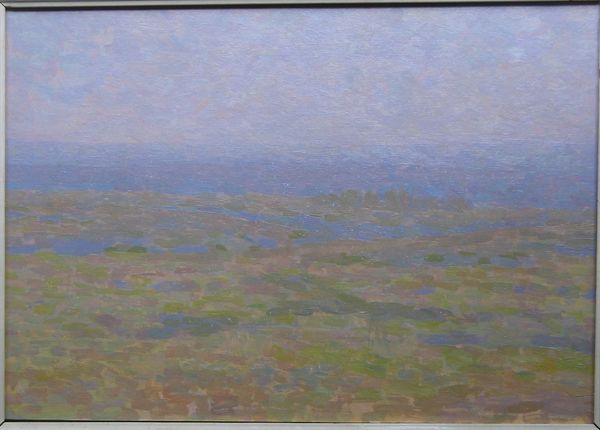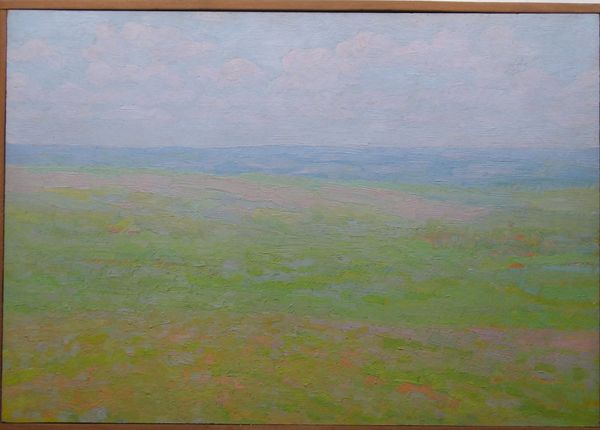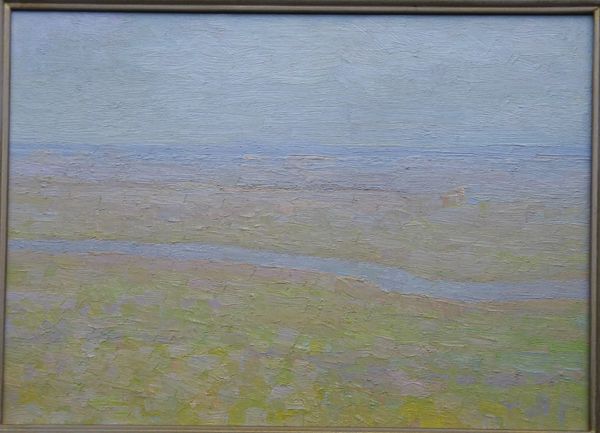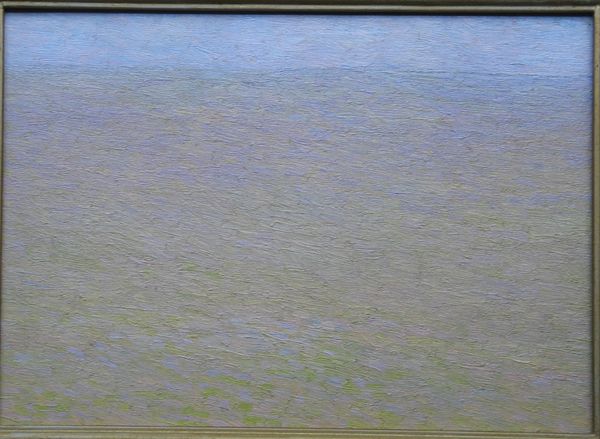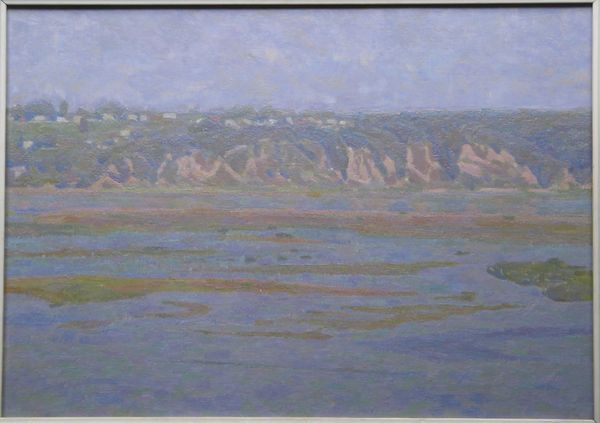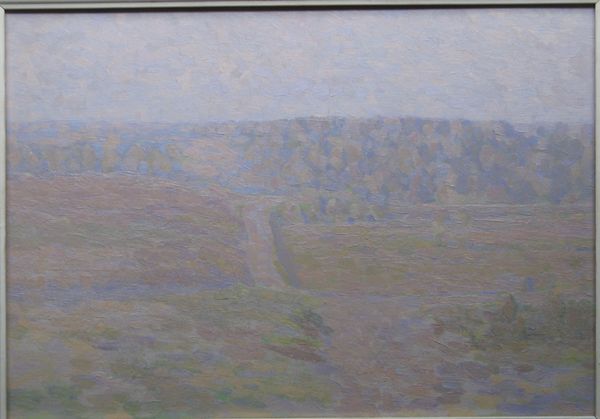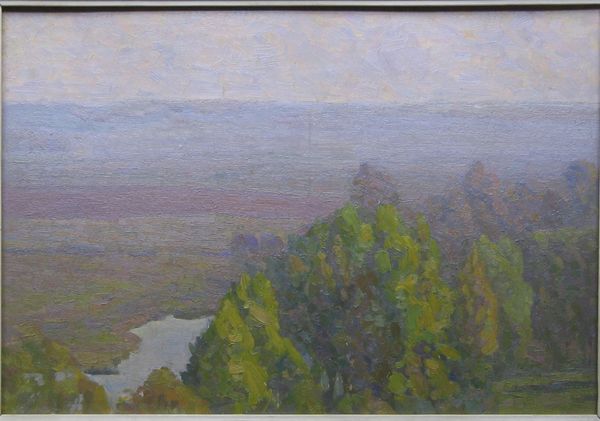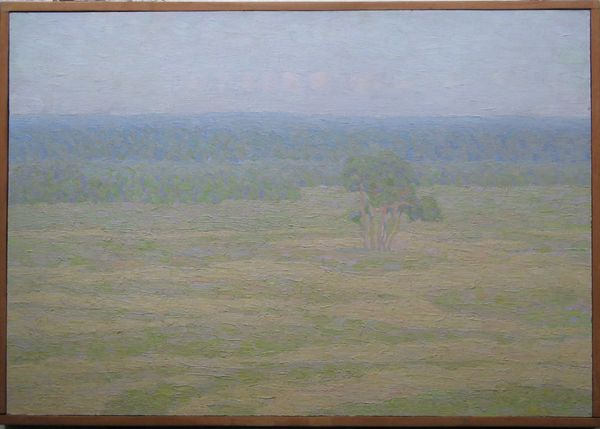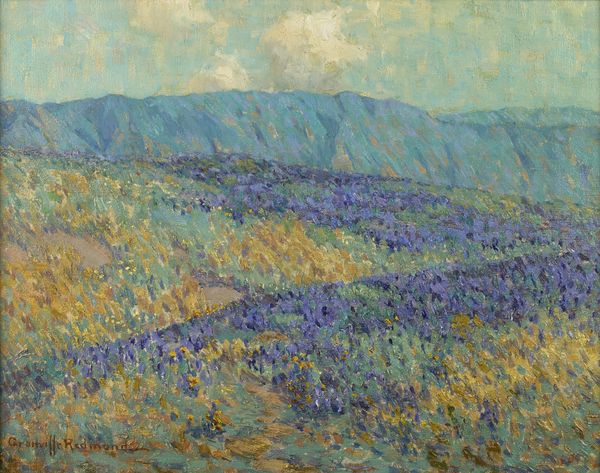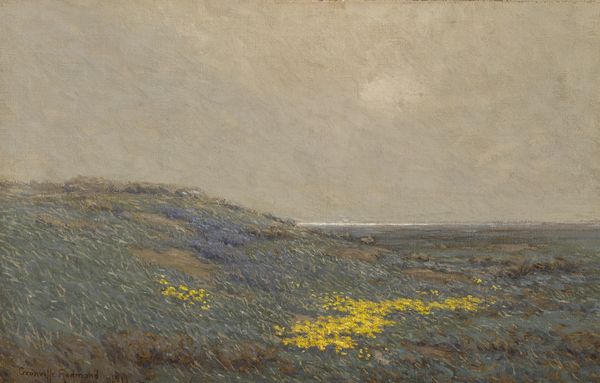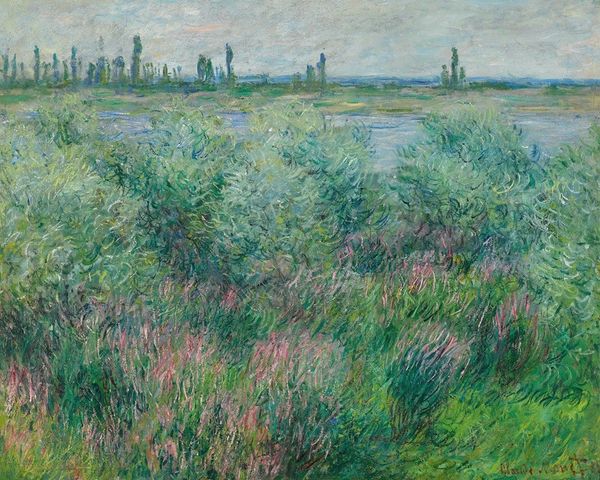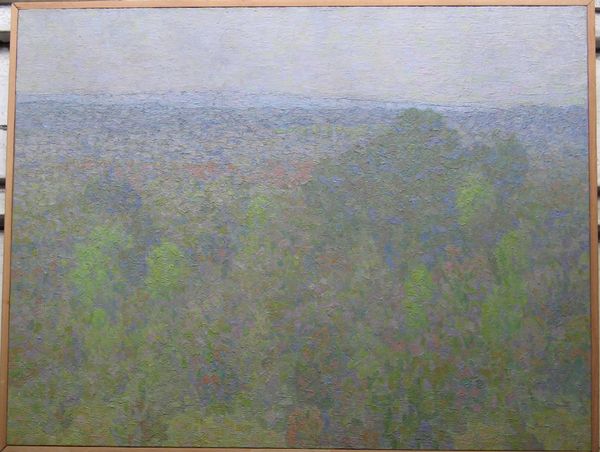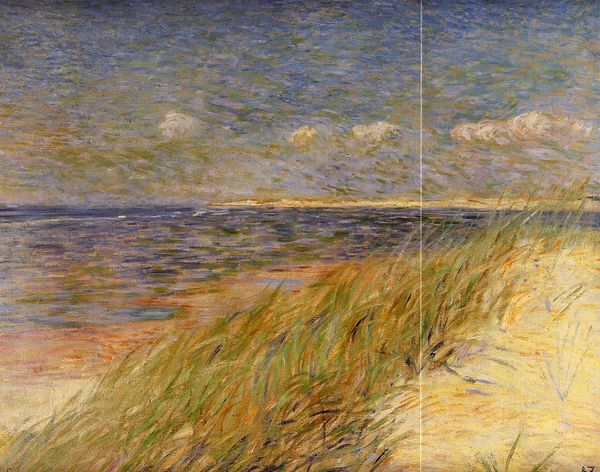
painting, acrylic-paint, impasto
#
contemporary
#
abstract painting
#
painting
#
canvas painting
#
landscape
#
acrylic-paint
#
impasto
#
acrylic on canvas
#
abstraction
#
abstract art
#
modernism
Copyright: Hryhorii Havrylenko,Fair Use
Editor: This is Hryhorii Havrylenko’s "Landscape (from the Triptych)," painted in 1971 using acrylic on canvas. The hazy atmosphere gives it an almost dreamlike quality. What's your interpretation? Curator: This work resonates strongly with the politicized landscapes common during the Soviet era, where nature became a symbol of national identity and resistance, even subtly. Do you see how the abstract representation allows for multiple interpretations? It avoids overt political statements, yet speaks to a longing for freedom through its vast, open spaces. Editor: Yes, I can see that. The lack of specific details makes it universal, but also potentially subversive. It’s not a literal place, so it’s harder to censor. Curator: Exactly. The impasto technique and the muted colors, while aesthetically pleasing, also hint at the difficulties of the time. Resources were scarce, artistic expression was controlled. The very act of creating a landscape, even an abstract one, was a form of quiet rebellion against the imposed artistic style of Socialist Realism. What do you think that reveals about the artist? Editor: That he found ways to push back within the established system. It makes you wonder about the intended audience and the risks he might have taken to exhibit this work. Curator: Indeed. Think about the role of art institutions at the time – galleries, unions – all under state control. Displaying such a piece would require navigating complex socio-political currents. Understanding those dynamics really illuminates the painting's significance. Editor: I hadn't considered the institutional pressures shaping the art itself. Thanks for broadening my perspective. Curator: It's a good reminder that art doesn’t exist in a vacuum. Looking at art as a reflection of the historical moment adds a whole new dimension.
Comments
No comments
Be the first to comment and join the conversation on the ultimate creative platform.
